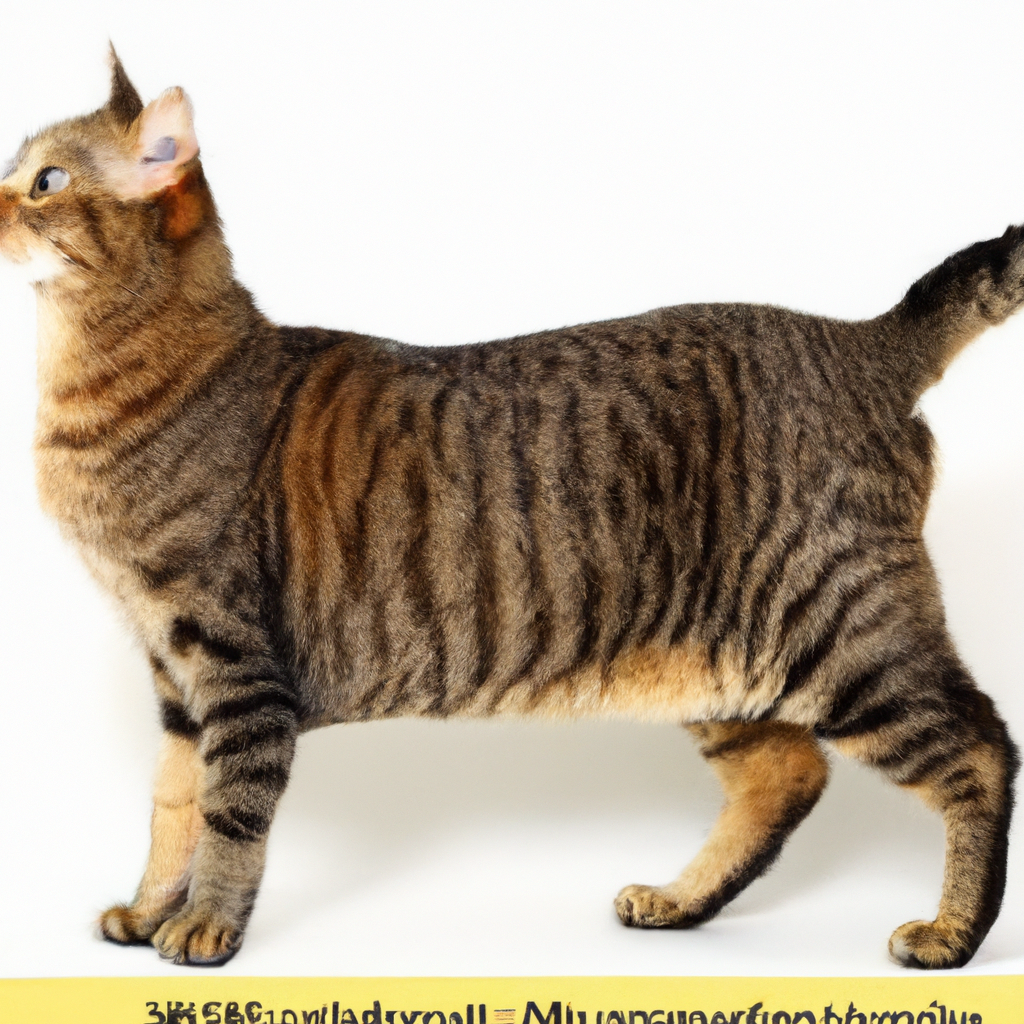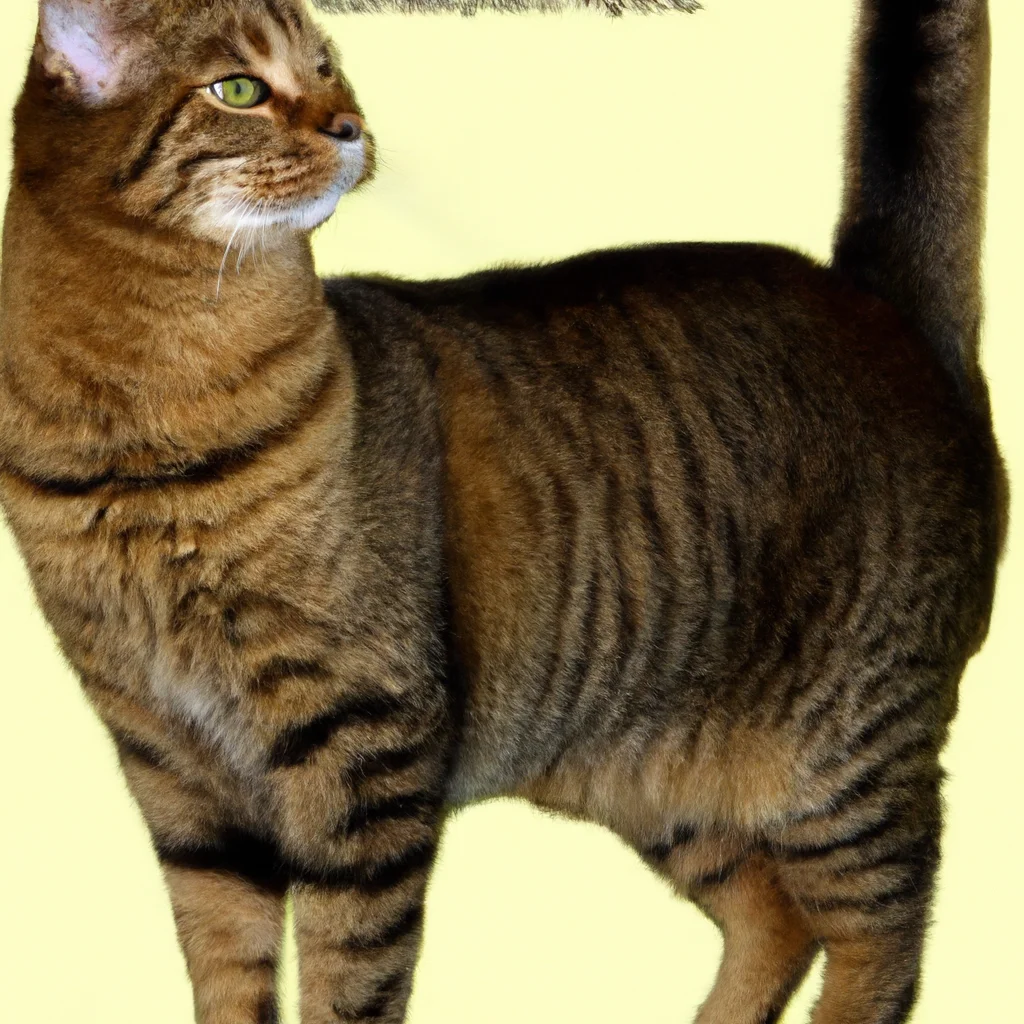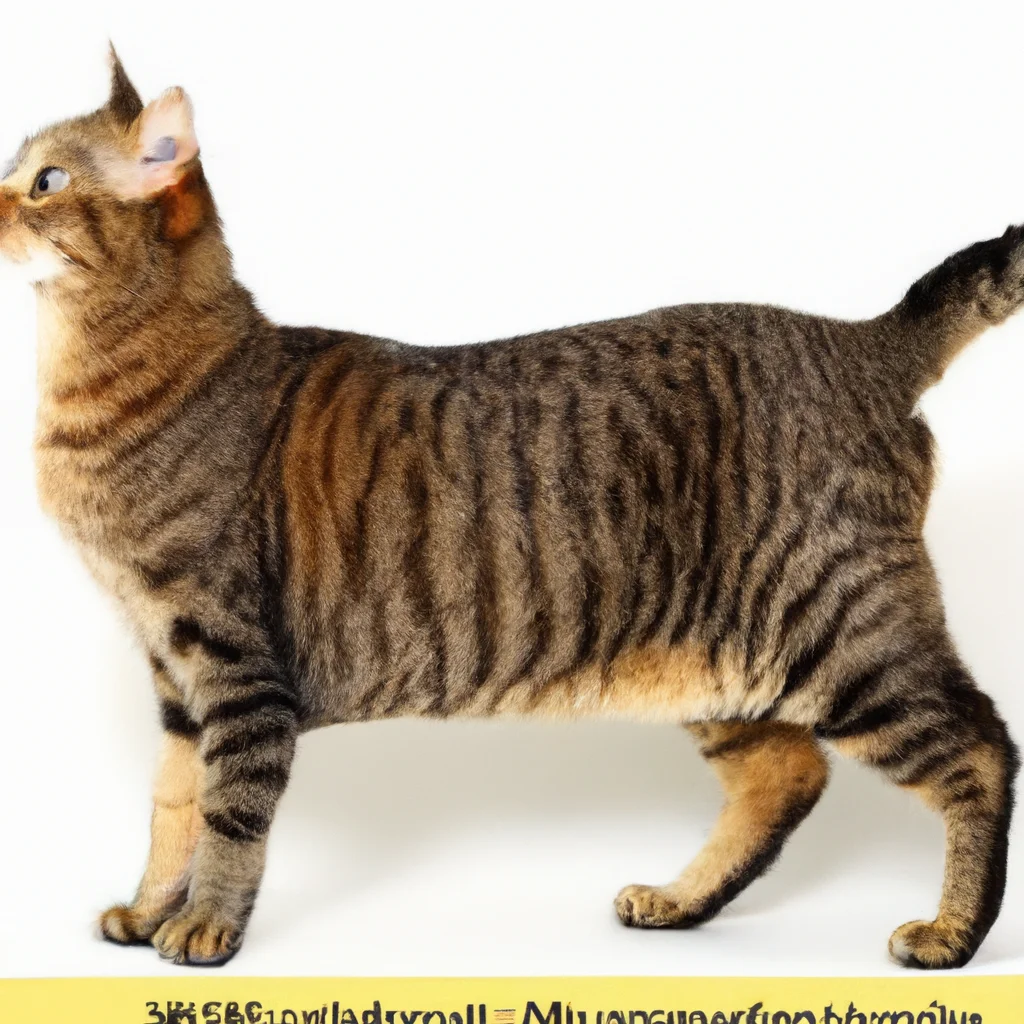If you’ve ever wondered what makes tabby cats so unique, this article is here to satisfy your curiosity. Tabby Cat Breeds: What You Need to Know is your go-to guide for understanding the different types of tabby cats, their distinctive markings, and their playful personalities. From classic tabbies to ticked tabbies, you’ll discover the fascinating world of these adorable feline friends. Whether you’re considering adopting a tabby or simply want to expand your knowledge of cat breeds, this article has everything you need to know about these charming companions.

What is Tabby Cat Breed?
Definition of Tabby Cats:
Tabby cats are a popular and beloved breed of domestic cats that are known for their distinctive coat patterns. Unlike a specific cat breed, “tabby” refers to a coat pattern that can be found in various cat breeds.
Origin of Tabby Cats:
Tabby cats have a long and fascinating history. The name “tabby” is believed to have originated from the word “Atabi,” which was used to describe a rich silk fabric that had a pattern similar to the markings on a tabby cat. Tabby cats are descendants of the African wildcat and have been domesticated for thousands of years.
Tabby Cats vs. Other Breeds:
While many people may think of tabby cats as a separate breed, it’s important to note that tabby is a coat pattern and not a distinct breed. Tabby cats can be found in various breeds, including Maine Coon, American Shorthair, British Shorthair, Bengal, and Egyptian Mau. Each breed may have its own unique characteristics and temperaments, but all tabby cats share the beautiful coat pattern that gives them their name.
Characteristics of Tabby Cats
Physical Appearance:
Tabby cats are known for their medium to large size and muscular build. They have a round face with expressive eyes and a strong, well-developed body. Their ears are usually medium-sized and slightly rounded. One of the most striking features of tabby cats is their coat pattern, which can vary greatly from cat to cat.
Coat Colors and Patterns:
Tabby cats can come in a wide range of coat colors, including brown, gray, black, orange, and cream. The most common coat pattern for tabby cats is the classic tabby pattern, which typically consists of bold swirling patterns on the body and stripes on the legs and tail. Other patterns, such as the mackerel, spotted, and ticked, can also be found in tabby cats.
Eyes and Markings:
Tabby cats can have a variety of eye colors, including green, gold, and copper. The color of their eyes often complements their coat color, creating a beautiful harmony. In addition to their coat patterns, tabby cats may also have distinct markings, such as a marked “M” shape on their forehead or a bold neckband pattern.
Different Tabby Cat Patterns
Classic Tabby:
The classic tabby pattern is the most well-known and recognizable pattern among tabby cats. It features bold swirling patterns on the cat’s body, with distinct stripes on the legs and tail. The classic tabby pattern can come in a variety of colors and is often referred to as a “bullseye” or “marbled” pattern.
Mackerel Tabby:
The mackerel tabby pattern is characterized by narrow, vertical stripes that run parallel to each other along the cat’s body. This pattern is reminiscent of a fishbone, which is where the name “mackerel” comes from. Mackerel tabbies often have a more slender appearance compared to other tabby patterns.
Spotted Tabby:
As the name suggests, spotted tabbies have small or large spots on their coat, rather than stripes or swirls. The spots can be round or elongated and are usually evenly distributed across the cat’s body. This pattern gives tabby cats a unique and playful appearance.
Ticked Tabby:
Ticked tabbies have a unique coat pattern where each hair is individually banded with multiple colors. This gives the cat’s coat a speckled or salt-and-pepper appearance. The most well-known example of a ticked tabby is the Abyssinian cat, which has a warm reddish-brown coat with dark ticking.
Popular Tabby Cat Breeds
Maine Coon:
The Maine Coon is one of the most popular and beloved tabby cat breeds. Known for their large size and gentle nature, Maine Coons are often referred to as “gentle giants.” They have a thick, shaggy coat with a variety of tabby patterns.
American Shorthair:
The American Shorthair is another well-known tabby cat breed. Known for their sturdy build and friendly demeanor, American Shorthairs come in a variety of colors and patterns, including classic tabby and mackerel tabby.
British Shorthair:
The British Shorthair is a proud and regal tabby cat breed. Known for their round faces and dense coats, British Shorthairs have a variety of coat patterns, including classic tabby and spotted tabby.
Bengal:
The Bengal cat is a hybrid breed known for its exotic appearance and energetic personality. Bengal cats have a unique coat that resembles that of a wild leopard, with a variety of tabby patterns, including spotted and marbled.
Egyptian Mau:
The Egyptian Mau is an elegant and striking tabby cat breed. Originating from Egypt, this breed is known for its unique spotted tabby pattern, as well as its graceful and agile nature.

Temperaments of Tabby Cats
Playfulness and Energy Levels:
Tabby cats are generally known for being playful and energetic. They love interactive playtime and enjoy chasing toys or engaging in games that stimulate their natural hunting instincts. Regular playtime is important for keeping tabby cats mentally and physically stimulated.
Socialization and Bonding:
Tabby cats are typically social and enjoy the company of their human companions. They are known to form strong bonds with their owners and thrive in a loving and nurturing environment. Proper socialization from a young age can help tabby cats develop into friendly and outgoing adults.
Intelligence and Trainability:
Tabby cats are known for being intelligent and quick learners. They can be easily trained using positive reinforcement techniques. Teaching them basic commands and providing mental stimulation through puzzle toys or treat-dispensing toys can help keep their sharp minds engaged.
Caring for a Tabby Cat
Nutritional Needs:
Proper nutrition is essential for the overall health and well-being of tabby cats. A balanced diet that includes high-quality protein, essential fatty acids, and a variety of vitamins and minerals is recommended. Consult with a veterinarian to determine the best diet plan for your tabby cat based on their age, weight, and any specific dietary requirements.
Exercise and Playtime:
Tabby cats have a moderate level of energy and require regular exercise to keep them fit and healthy. Playtime, both interactive and independent, is crucial for their physical and mental stimulation. Engage in regular play sessions with toys that encourage them to run, jump, and climb.
Grooming Requirements:
Tabby cats generally have low grooming needs due to their short or medium-length coats. Regular brushing helps remove loose hair, prevents matting, and stimulates blood circulation. Bathing is usually not necessary unless the cat gets particularly dirty. However, it’s important to keep their ears clean and nails trimmed.
Litter Box Training:
Like any other cat, litter box training is essential for tabby cats. Provide a clean and easily accessible litter box, and show your tabby cat where it is located. Ensure the litter box is cleaned regularly, as cats are known to be clean animals and prefer a hygienic environment.
Common Health Issues in Tabby Cats
Obesity:
Tabby cats, like many other cat breeds, can be prone to obesity if not properly managed. Obesity can lead to several health problems, including joint issues, diabetes, and heart disease. Maintain a healthy weight for your tabby cat by providing a balanced diet and engaging in regular exercise.
Periodontal Disease:
Dental care is crucial for tabby cats, as they can be prone to periodontal disease. Regular brushing of their teeth using cat-friendly toothpaste can help prevent tartar buildup and maintain good oral hygiene. Routine dental check-ups with a veterinarian are also recommended.
Urinary Tract Problems:
Tabby cats may be prone to urinary tract problems, including urinary tract infections and urinary blockages. Proper hydration and a balanced diet can help prevent these issues. If your tabby cat shows any signs of urinary discomfort or abnormal behavior, consult with a veterinarian immediately.
Genetic Disorders:
As with any cat breed, tabby cats can be susceptible to certain genetic disorders. It’s essential to research and choose a reputable breeder who performs health tests on their breeding cats to minimize the risk of genetic disorders. Regular veterinary check-ups can also help detect any potential health issues early on.
Grooming Needs of Tabby Cats
Brushing and Bathing:
Most tabby cats have short or medium-length coats that require minimal grooming. Regular brushing, at least once a week, helps remove loose hair and prevents matting. Bathing is only necessary if the cat gets dirty or smelly, but be sure to use cat-friendly shampoos and rinse thoroughly.
Nail Trimming:
Keep your tabby cat’s nails trimmed to prevent them from becoming too long or sharp. Use cat-specific nail clippers and be cautious not to cut into the quick of the nail, as it can cause bleeding and discomfort. Regular nail trims also help protect your furniture and reduce the risk of accidental scratches.
Ear Cleaning:
Check your tabby cat’s ears regularly for any signs of wax buildup or infection. Use a damp cotton ball or cat-specific ear cleaning solution to gently clean the outer part of the ear. Avoid inserting anything deep into the ear canal, as it can cause injury. If you notice any redness, discharge, or a foul odor, consult with a veterinarian.
Dental Care:
Tabby cats, like all cats, require proper dental care to maintain good oral hygiene. Brushing their teeth with a cat-friendly toothbrush and toothpaste helps remove plaque and prevent tartar buildup. Dental treats or chew toys can also help promote dental health and reduce the risk of periodontal disease.
Training and Socialization for Tabby Cats
Positive Reinforcement:
Tabby cats respond well to positive reinforcement training methods. Rewarding good behavior with treats, praise, or playtime helps reinforce positive habits and encourages them to repeat desired actions. Avoid using punishment or negative reinforcement, as it can potentially damage the trust between you and your tabby cat.
Teaching Basic Commands:
Teaching basic commands to your tabby cat can be a fun and rewarding experience. Start with simple commands like “sit” or “come” and use treats or toys as rewards. Break down the training sessions into short, frequent sessions to keep your tabby cat engaged and avoid overwhelming them.
Encouraging Proper Behavior:
Tabby cats thrive in an environment that encourages and reinforces proper behavior. Provide plenty of scratching posts, interactive toys, and vertical spaces for them to climb. Additionally, establish a consistent routine and set boundaries to help your tabby cat understand what is expected of them.
Cost of Owning a Tabby Cat
Initial Adoption or Purchase Costs:
The cost of adopting or purchasing a tabby cat can vary depending on factors such as the specific breed, location, and breeder. Adoption fees typically range from $50 to $150, while purebred tabby cats can cost anywhere from $500 to $2000.
Routine Veterinary Care:
Routine veterinary care is an essential aspect of responsible pet ownership. Annual vaccinations, regular check-ups, flea and tick preventatives, and routine blood work are some of the basic veterinary expenses to consider. The cost of routine veterinary care for a tabby cat can range from $200 to $500 per year.
Food and Supplies:
The cost of food and supplies for a tabby cat can vary depending on the brand and quality of the products chosen. High-quality cat food, litter, toys, grooming supplies, and a comfortable bed are some of the essential items to budget for. On average, the monthly cost of food and supplies can range from $50 to $100.
Emergency Expenses:
It’s important to be prepared for unexpected veterinary expenses that may arise due to accidents or sudden illnesses. Emergency veterinary care can be costly, so having an emergency fund or pet insurance coverage can provide peace of mind. It’s recommended to set aside at least $500 to $1000 for emergency expenses.
In conclusion, tabby cats are a unique and beloved breed known for their beautiful coat patterns and friendly personalities. Whether you choose a Maine Coon, American Shorthair, British Shorthair, Bengal, or Egyptian Mau, caring for a tabby cat involves providing them with proper nutrition, grooming, socialization, and training. Remember to consider the potential health issues that tabby cats may be prone to and budget for the costs involved in owning a tabby cat. With love, care, and attention, your tabby cat will surely bring joy and companionship into your life.

